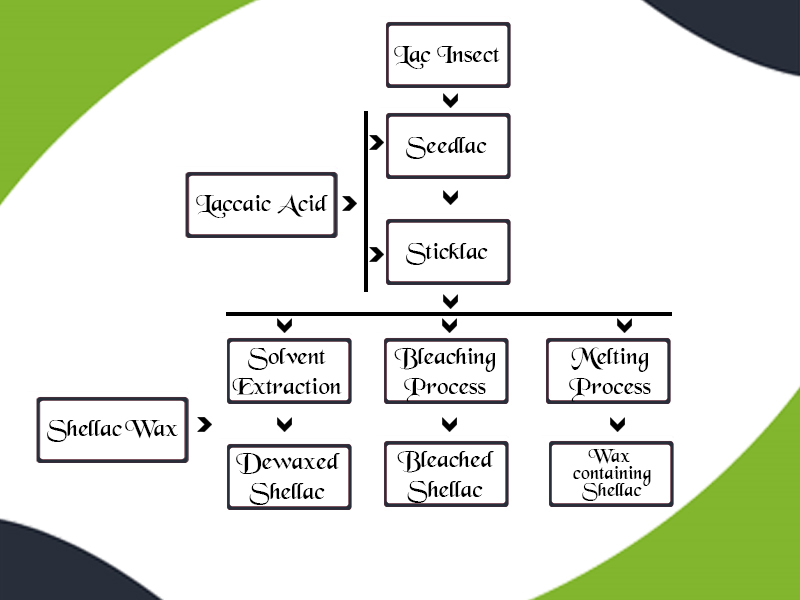
Shellac, the most interesting material that becomes the origin of the long shelf life of many food items, furniture, cosmetics, etc. is a matter of wonder for the people even today. ‘Natural glue’ is the correct term that can be awarded to Shellac.
Whatever you name, whether it’s fruit coating, medicinal pill coverage, a primary ingredient of French nail polish, confectionery glazing agent, printing inks, etc., you will find a familiar and only name that is ‘Shellac.’
We will be enlightened with the various types of shellac and their general usage. But, first, let’s check the refining process of shellac in the form of a chart for better understanding.

Various types of Shellac widely differ in the sphere of material properties. The increase in the differences is clearly understood along with the age of shellac.
- Digging the shellac processibility:
The processibility is influenced by the variations of the mechanical and physiological properties. It decides whether the shellac can be applied in the pharmaceutical industry. Owing to the regulatory status, the material may be allowed for coating the food products where there is no entry of other coating materials. The subcoat compositions lead to the development of the sustained release formulations of drugs and dietary supplements.
- Coming to the shellac variety and their mandatory usage:
- Wax coating shellac:
- It’s origin:
Traditional melting filtration process in which the molten seedlac is pressed via a filter and further spread out to a film
- It’s Usage:
- Shellac is vividly used as a ‘wax coating’ on the citrus fruits to increase the shelf life.
- It replaces the apple’s natural wax that is usually removed during cleaning. It has got a unique food additive E number that is E904.
- Bleached shellac:
- The birthplace:
When the shellac is dissolute in the aqueous alkali solution which is eminently followed by the treatment with sodium hypochlorite, we get bleached shellac. The bleaching process is the source of changes in the molecular structure like chlorination which out-turns in higher reactivity lowering the stability.
- The application of bleached shellac:
- Bleached shellac is non-toxic. Hence it is edible and physiologically harmless.
- The food industry is a lover of bleached shellac. From packaging to overlaying directly on the fruits, sweets, and confectioneries, shellac is the only coating agent, people trust.
- Bleached lac is durable, glossy and odorless. It has adhesive, binding and hardening qualities.
- The plus point is the fast drying character.
- Water – Alkali solutions and transparent or lightly tinted alcoholic solutions can be achieved from bleached lac.
- De-waxed shellac:
- Its contribution to the pharma industry:
- Refined shellac by the solvent extraction is widely used to coat medicinal pills.
- Shellac produced from Laccifer Lacca is utilized for making dentures.
In a nutshell, the benefaction of shellac is implemented as primer, binder, coating, glaze enhancing, adhesive, etc. in cosmetics, food, pharmaceutical products, textiles, adhesives, plastic, rubber, leather, fertilizers, seeds, fruits, wood, pyrotechnics, printer inks, paints, confectionery and many other viable things depending on the character and grade that is best suitable for the specific products.

